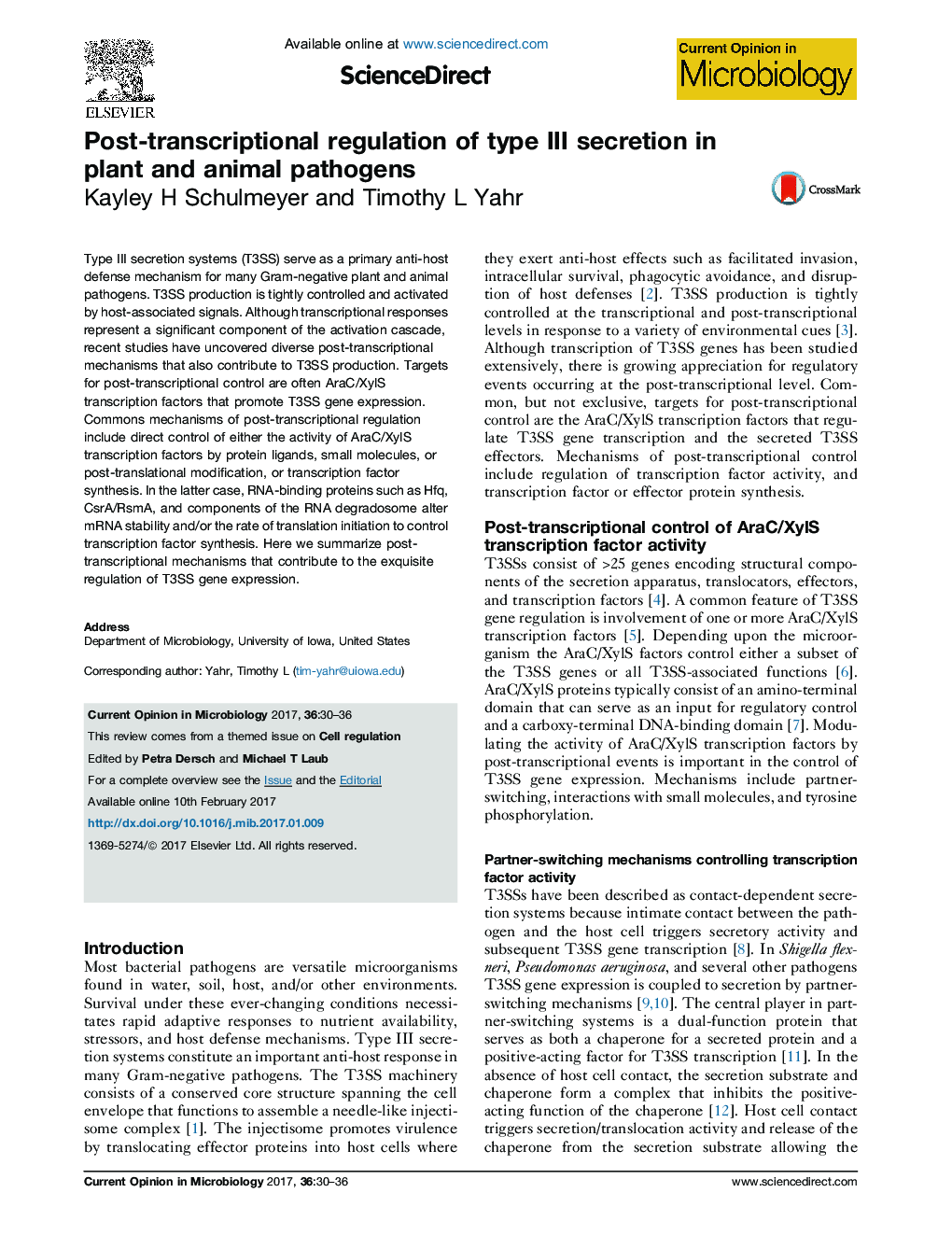| Article ID | Journal | Published Year | Pages | File Type |
|---|---|---|---|---|
| 5671745 | Current Opinion in Microbiology | 2017 | 7 Pages |
â¢Post-transcriptional mechanisms integrate T3SS expression into global regulatory networks.â¢T3SS transcription factors are common targets of post-transcriptional control.â¢Involvement of RNA-binding and modifying proteins is a common feature of post-transcriptional control mechanisms.
Type III secretion systems (T3SS) serve as a primary anti-host defense mechanism for many Gram-negative plant and animal pathogens. T3SS production is tightly controlled and activated by host-associated signals. Although transcriptional responses represent a significant component of the activation cascade, recent studies have uncovered diverse post-transcriptional mechanisms that also contribute to T3SS production. Targets for post-transcriptional control are often AraC/XylS transcription factors that promote T3SS gene expression. Commons mechanisms of post-transcriptional regulation include direct control of either the activity of AraC/XylS transcription factors by protein ligands, small molecules, or post-translational modification, or transcription factor synthesis. In the latter case, RNA-binding proteins such as Hfq, CsrA/RsmA, and components of the RNA degradosome alter mRNA stability and/or the rate of translation initiation to control transcription factor synthesis. Here we summarize post-transcriptional mechanisms that contribute to the exquisite regulation of T3SS gene expression.
